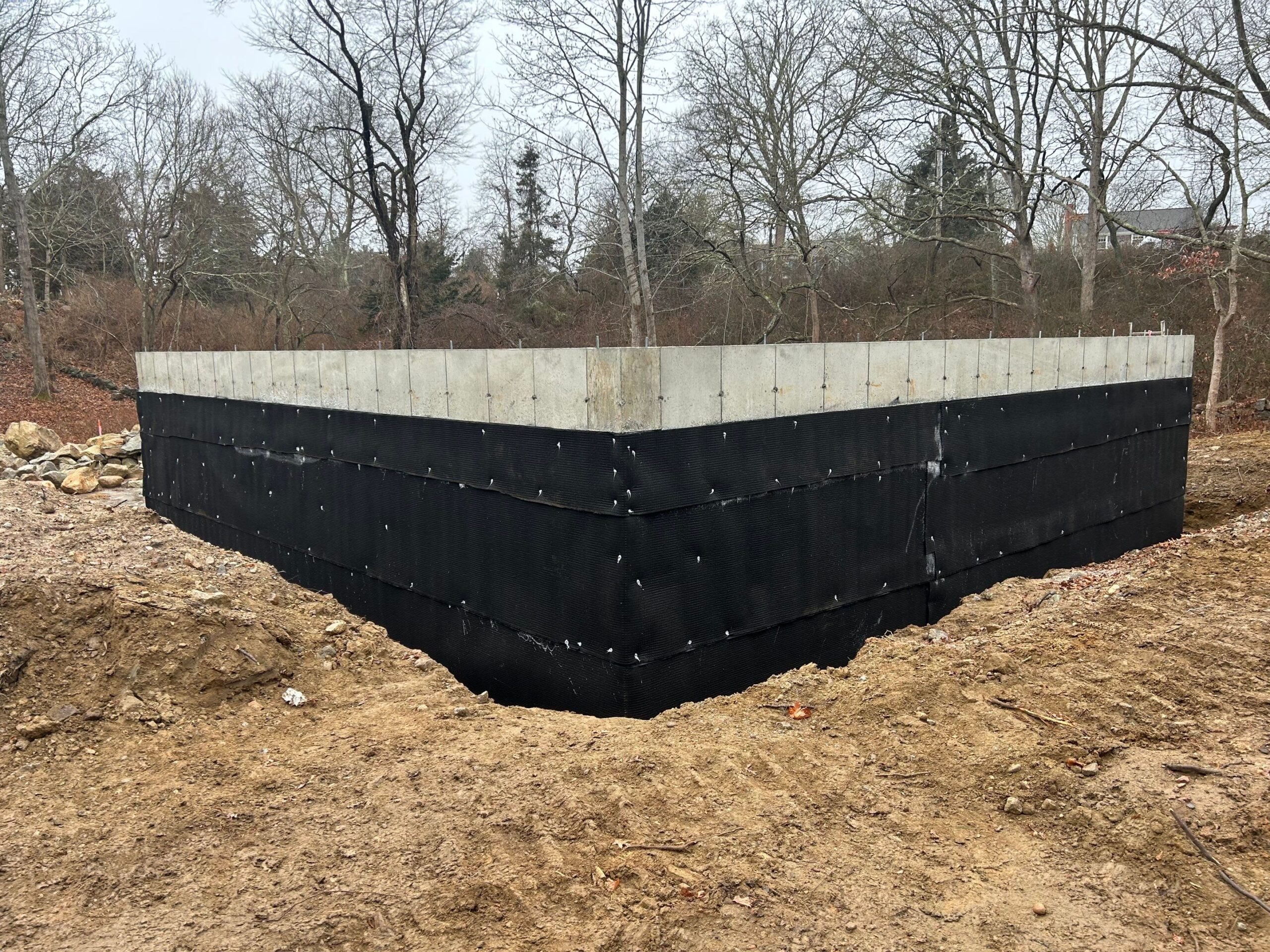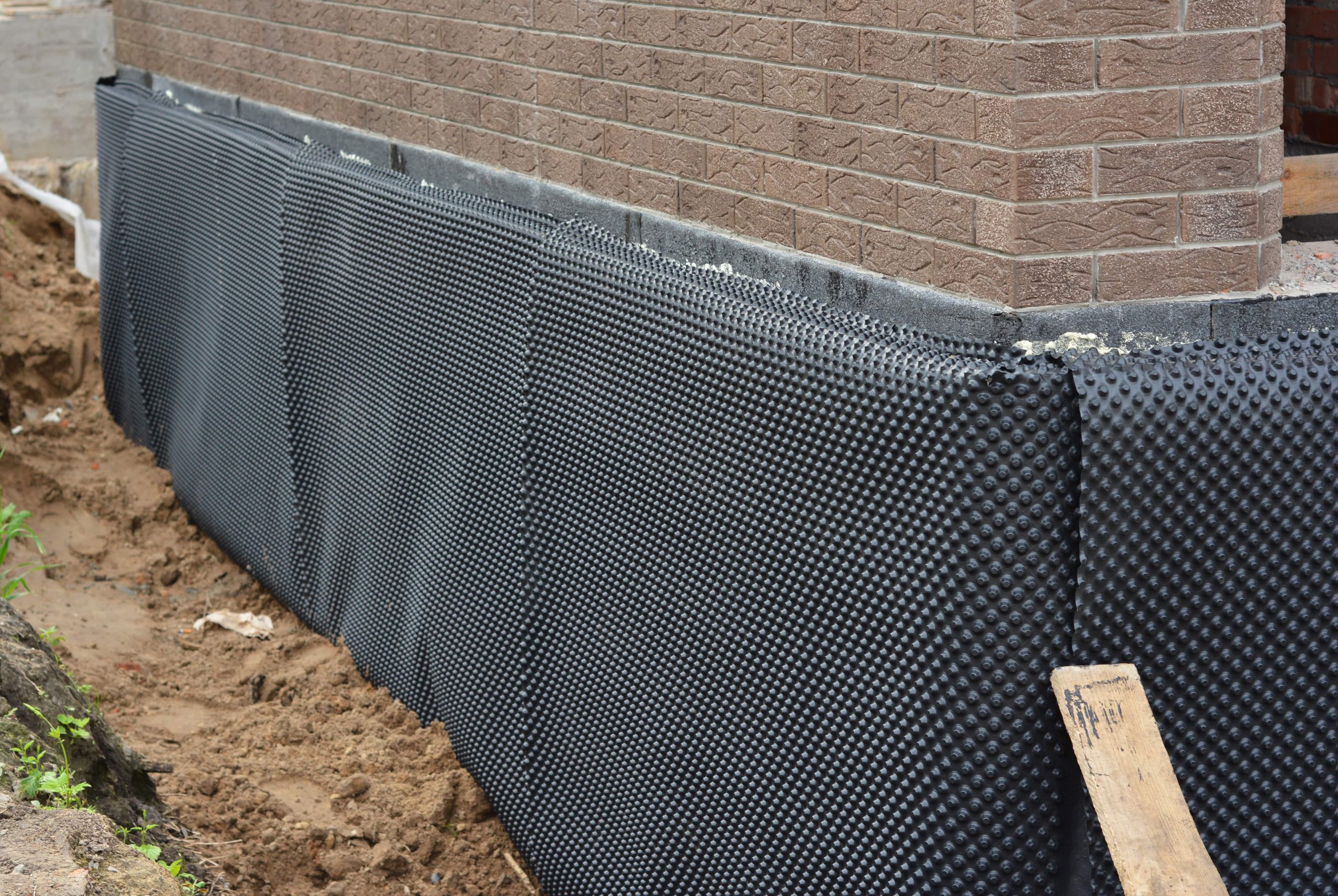Pro tips on dealing with rising damp from damp proofing newcastle
Exploring the Various Strategies and Solutions for Effective Damp Proofing
Moisture in buildings poses substantial challenges to both architectural integrity and indoor air top quality. Different techniques and services have emerged to fight this pervasive concern. From standard damp-proof membrane layers to ingenious chemical treatments, each technique supplies one-of-a-kind benefits. Comprehending these choices is necessary for effective dampness control. Nonetheless, choosing the ideal remedy relies on specific structure problems and requirements, prompting more exploration into the most reliable damp proofing approaches offered.
Recognizing the Causes of Dampness
Dampness can arise from various resources, recognizing these causes is important for reliable removal. Generally, wetness stems from 3 main resources: increasing damp, permeating damp, and condensation. Climbing damp occurs when groundwater takes a trip up-wards via porous products, such as block or rock, typically because of a lack of a reliable obstacle (mould removal newcastle). Penetrating moist is normally triggered by external variables, including roof covering leakages, faulty rain gutters, or harmed wall surfaces, enabling water to infiltrate a residential property. Condensation, on the other hand, results from excess dampness airborne, usually intensified by poor air flow and temperature level distinctions, causing water beads developing on surfaces. Determining these underlying issues is essential, as each type of wetness calls for a customized approach for removal. Correct analysis helps in determining the most efficient remedies, inevitably guarding the architectural honesty of a structure and boosting indoor air high quality
Conventional Damp-Proof Membranes

Chemical Damp-Proofing Solutions
Chemical damp-proofing options provide a cutting-edge strategy to avoid dampness intrusion in structures. These approaches commonly entail the application of liquid chemicals that permeate masonry and create a barrier against increasing wet. Frequently used chemicals include silanes, siloxanes, and other water-repellent agents that react with surface products to develop a hydrophobic layer.The application procedure usually requires drilling openings into the wall surfaces, infusing the chemical solution, and permitting it to treat. This technique is specifically beneficial for older frameworks where typical damp-proof membrane layers may be unwise. In addition, chemical damp-proofing can be much less disruptive and more cost-effective than extensive remodelling projects.While reliable, these options depend upon correct application and environmental problems for peak efficiency. Routine upkeep and monitoring are necessary to guarantee the durability of the damp-proofing therapy. On the whole, chemical damp-proofing represents a flexible alternative for protecting structures against moisture-related damage
Tooth Cavity Wall Building Strategies
Tooth cavity wall surface construction strategies use countless advantages, specifically in moisture control and energy effectiveness. By including an air space in between 2 layers of stonework, these walls properly reduce water access while improving insulation. This mix not only shields structures from wetness however additionally adds to decreased energy usage.
Benefits of Dental Caries Walls
When thinking about efficient wet proofing techniques, the benefits of cavity walls stand out prominently. Cavity walls contain 2 different layers, creating an air gap that successfully lowers dampness infiltration. This style minimizes the threat of wetness, as the external wall surface functions as an obstacle against rain and water access. Additionally, tooth cavity wall surfaces boost thermal insulation, which adds to power performance by minimizing warmth loss. They additionally offer sound insulation, assisting to produce a quieter interior setting. Additionally, the air void enables for air flow, which aids in wetness control and lowers the possibility of mold development. These advantages not just improve the overall comfort of a structure but also contribute to its longevity and structural integrity.
Dampness Control Methods
Effective moisture control methods are critical in dental caries wall surface building and construction to guarantee long-term defense against wetness. One primary technique includes the consolidation of weep holes, which promote water drainage from the tooth cavity, avoiding buildup. Additionally, using breathable membranes can aid take care of wetness levels while allowing trapped vapor to escape. Correct positioning of insulation is also crucial, as it should not obstruct water drainage courses. Additionally, ensuring that the external fallen leaves of the tooth cavity wall surface are created with waterproof products enhances total toughness. Regular upkeep checks are vital to identify any type of clogs or damages early, securing the structure's stability. Inevitably, a mix of these methods develops a robust protection against moisture intrusion in cavity walls.
Insulation and Energy Effectiveness
Insulation plays an important function in boosting power performance within cavity wall building. By integrating insulating materials, these walls produce a thermal barrier that minimizes heat loss and lowers power usage. Efficient insulation not only assists preserve a stable indoor temperature level however likewise minimizes the threat of dampness, as it avoids condensation within the wall dental caries. Different techniques, such as the use of inflexible foam boards or mineral wool, can be utilized to attain optimal insulation efficiency. In addition, correct installation is necessary to assure that voids and voids are minimized, which can otherwise compromise energy efficiency. Ultimately, a well-insulated cavity wall adds greatly to total sustainability and decreases heating & cooling expenses for house owners.
Outside Damp Proofing Approaches
External moist proofing methods are important for securing structures from wetness seepage. Two reliable techniques include the application of water resistant membrane layers and the installation of French drains. These solutions aid reduce water accumulation and protect the stability of structures.
Waterproof Membrane Application
While different approaches exist for preventing dampness access, the application of water-proof membranes stays a very efficient external wet proofing strategy. These membranes are usually made from products such as polyethylene, rubber, or customized bitumen, giving a durable barrier versus water penetration. The installation process includes applying the membrane to the exterior surfaces of structures or wall surfaces, ensuring total protection to avoid leakages. Proper attachment and sealing at joints are important to optimizing effectiveness. Water resistant membrane layers can be used in different forms, including liquid finishes and sheet membranes, enabling adaptability based upon the details needs of the structure. This approach not just secures buildings from wetness but additionally improves their long life and structural honesty.
French Drain Installment
One effective method for handling groundwater and preventing moisture build-up around a building's foundation is the installation of a French drain. This water drainage system contains a trench loaded with gravel and a perforated pipeline that redirects surface area water far from the foundation. Proper installment calls for mindful preparation, making certain that the drainpipe slopes away from the framework to help with excellent water circulation. Furthermore, the location of the drainpipe is essential; it must be positioned in locations susceptible to merging or excess dampness. Routine maintenance, consisting of clearing up particles from the gravel and making sure the pipe remains unblocked, is vital for lasting efficiency. Eventually, a well-installed French drain can significantly lower the risk of water-related concerns in basements and structures.
Interior Waterproofing Strategies
Inside waterproofing techniques are important for safeguarding a building's inside from wetness seepage and potential water damage. These approaches commonly include the application of specialized materials and techniques created to develop a wetness barrier within the framework. One common approach is using water resistant coverings or sealants on walls and floorings, which protect against wetness from penetrating surfaces.Additionally, setting up interior drainage systems, such as sump pumps, can efficiently manage water build-up in cellars and creep rooms. Another technique entails using vapor obstacles, which are set up to hinder wetness movement from the ground into living spaces.Moreover, resolving any type of cracks or spaces in wall surfaces or structures with appropriate sealers ensures a complete defense versus water breach. By implementing these interior waterproofing techniques, home owners can substantially lower the risk of mold development, structural damage, and other moisture-related problems. Appropriate implementation of these strategies is important for lasting security and building integrity.
Normal Upkeep and Examination Practices
Normal upkeep and inspection practices are important for guaranteeing the long-term efficiency of moist proofing solutions in any kind of structure. Routine checks make it possible for residential property owners to identify very early signs of wetness intrusion, such as peeling off paint, mold growth, and stuffy smells. These indicators can indicate underlying problems that call for prompt attention.Inspections must be conducted a minimum of yearly, focusing on susceptible locations like basements, creep areas, and exterior wall surfaces. During these analyses, home proprietors ought to examine sealers, drainage systems, and ventilation to confirm they operate correctly.Additionally, keeping seamless gutters and downspouts is vital, as clogged up systems can result in water buildup near the structure. Implementing a routine upkeep schedule, together with timely repair work, can considerably expand the life expectancy of moist proofing measures and shield the structural stability of the structure. Positive steps eventually add to the total wellness and safety of the living setting.
Frequently Asked Questions
The Length Of Time Does Damp Proofing Commonly Last?
The duration of damp proofing effectiveness differs, typically lasting in between 20 to 50 years. Aspects such as application quality, ecological problems, and maintenance practices considerably affect the durability of the wet proofing therapy.

Can I Damp Evidence My Home Myself?
The specific pondered the expediency of do it yourself damp proofing. With correct research study and the ideal materials, it is feasible. Nevertheless, they additionally recognized the value of professional guidance to assure durable efficiency and protect against future problems.
What Are the Signs of Ineffective Damp Proofing?
Indicators of inefficient damp proofing consist of relentless musty odors, noticeable mold and mildew growth, peeling paint, moist spots on wall surfaces, and wood decay - damp proofing newcastle. Home owners must deal with these concerns immediately to avoid additional damage and health and wellness concerns
Does Damp Proofing Affect Indoor Air High Quality?

Just How Much Does Expert Damp Proofing Price?
Professional moist proofing read more prices vary substantially, normally varying from $1,000 to $5,000 depending on the building's size, the degree of the wet issue, and picked methods. Each scenario calls for a tailored assessment for precise rates. Generally, dampness stems from 3 primary sources: climbing wet, penetrating damp, and condensation. When taking into consideration reliable wet proofing techniques, the advantages of dental caries walls stand out plainly. External wet proofing approaches are necessary for securing frameworks from dampness infiltration. While numerous methods exist for stopping wetness ingress, the application of waterproof membrane layers continues to be a very reliable external moist proofing strategy. Signs of inefficient wet proofing consist of consistent stuffy odors, visible mold and mildew growth, peeling paint, wet spots on walls, and wood decay.